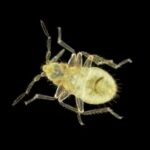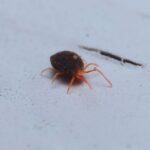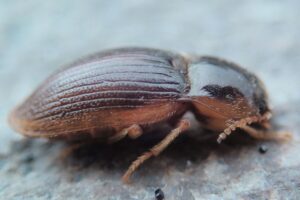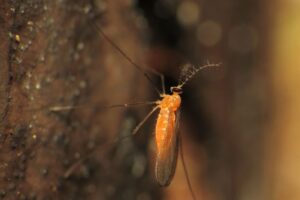Small gray bugs are scary because they are dirty, and they can carry all sorts of germs. They can wreck your home if they invade it. Tiny gray bugs, what are they, and how to get rid of them?
Many gray bugs can invade your home. The most common is the silverfish. They are small, nocturnal tiny insects that can infest your home. Silverfish insects have a silvery or grayish color. They are called silverfish because they move like fishes with their tapered tails. These tiny gray insects like to burrow in dark spots.
But don’t be overly afraid. There are many ways you can get rid of these gray bugs. One way is to ensure that your home is free of food litter so they won’t have any food source that they can thrive on. You can also use certain household cleaners and natural substances to get rid of them.
Read on to learn more about tiny gray bugs, how they infest your home, how to get rid of them, and tips on preventing them from invading and returning to your home.
Tiny Gray Bugs – What Are They and How to Get Rid of Them?
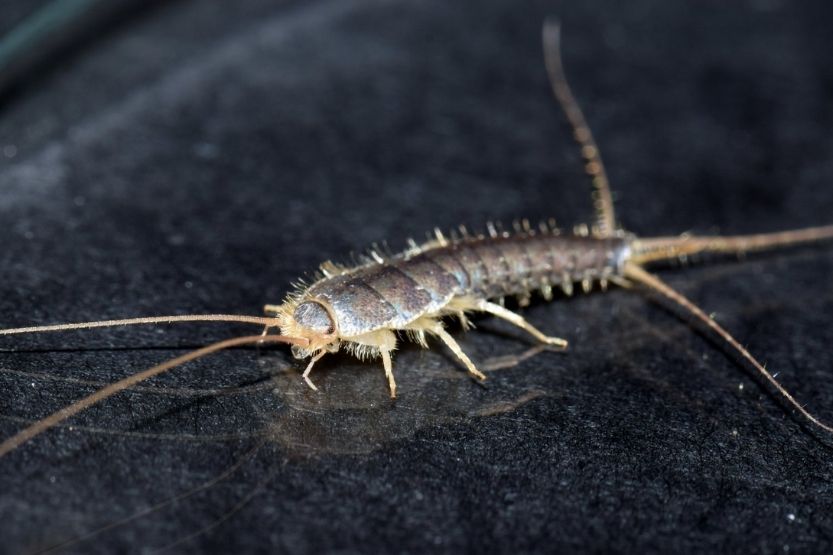
The usual tiny gray bugs that you see in homes are called silverfish. They are called that way because they move from side to side like fishes with their tapered tails. These tiny creatures are nocturnal, and they like to burrow in dark spots.
If these tiny creatures are not controlled, they can become pesky pests in your home. They can evade predators because they can move fast. Unfortunately, aside from the most common silverfish, there are other types of gray bugs that can infest your home.
If you find these gray bugs in your home, don’t worry. You can get rid of them by using natural substances that they don’t like. For instance, you can use certain household cleaning agents to discourage these pests from infesting your home.
Another way is to ensure that all nooks and corners of your house are clean. Make sure that there are no foods that are scattered around your home. Deprive them of their food source, and they won’t invade your home.
What Are Tiny Little Black Bugs?
Types of Gray Bugs
There are many types of insects that can invade your home. The most common pests are gray bugs. And the most common of these gray bugs is the silverfish. However, gray bugs are not just limited to silverfishes.
Let’s look at them one by one, so you will know which ones are living inside your house:
1. Silverfish
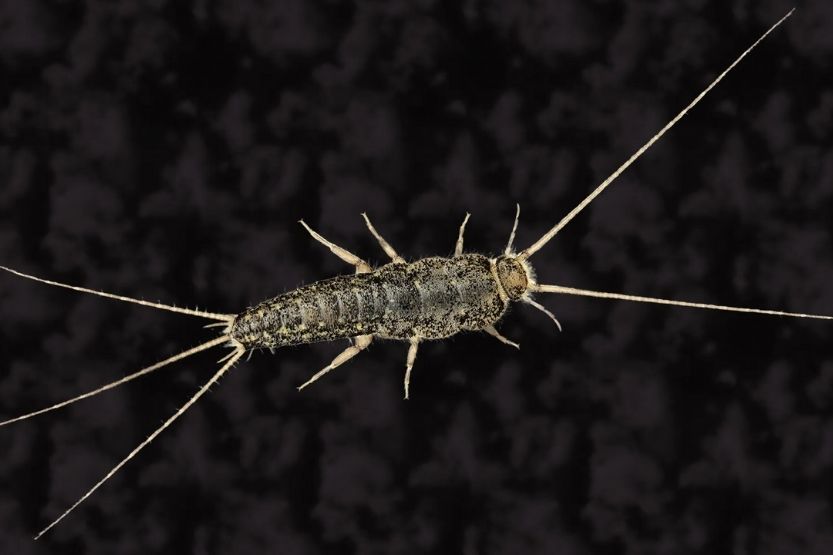
Silverfish are called this way because of their outer covering, which is silvery and gray. They also move like fishes with their tapered body and tails moving from side to side. These pesky pests move fast, so they cannot easily run away from their predators.
2. Sow Bugs and Pill Bugs
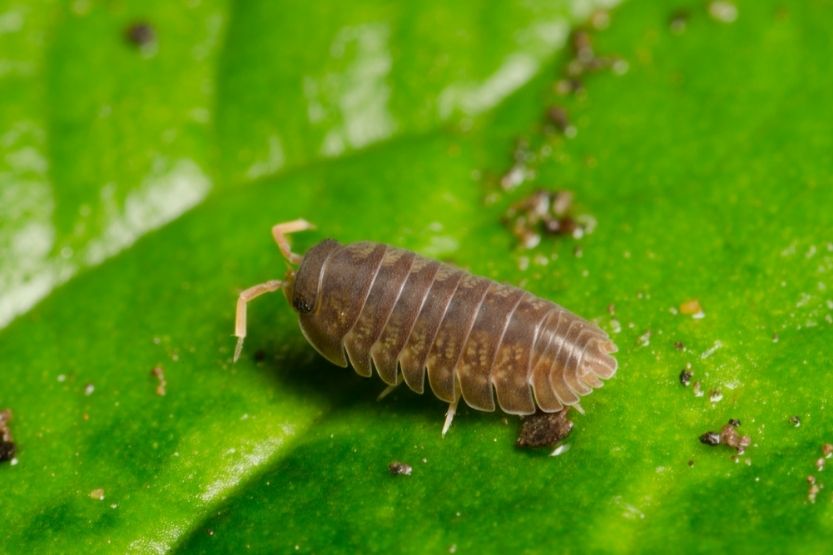
These gray bugs are somewhat similar to shrimps and crawfishes. Some people call them ‘rolly-polies’ because they roll into a ball when threatened. You can find them mainly lurking near gardens where there are concrete structures.
From there, they can go inside your house. They need moisture to survive. But they are not dangerous to humans since they don’t bite and are not carriers of germs that cause diseases.
3. Springtails

These tiny gray bugs can jump. They can appear in great numbers in places where there is so much moisture. So you can find them in bathrooms as well as in damp concrete areas.
Generally, these gray bugs are soil dwellers. So during summer, when the soil is dry, they will search for places inside your house where there is moisture. They are just about 1/16 inch long. These insects are not harmful because they don’t bite and don’t carry diseases with them.
4. Booklice
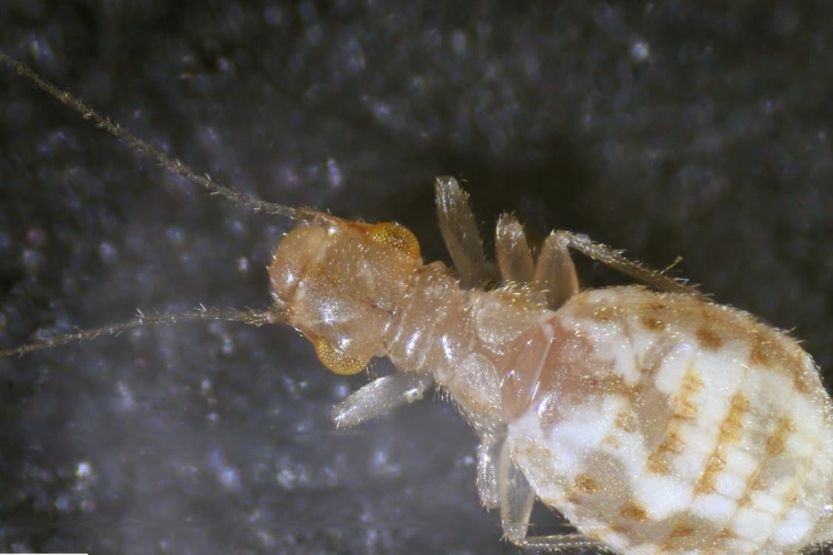
Despite their name, booklice do not belong to the family of lice. They are also called psocids. While they look like lice, they don’t feed on blood. They thrive on fungi and mold. So, you will find these tiny gray bugs in moist places like basements, where there is usually mold and fungi.
These insects are also about 1/16 inch long. They run very fast as well. While they can’t bite or carry diseases, these bugs can contaminate dry food like cereals. They are pesky in that sense.
Again, what are the tiny gray bugs you see in your home? The most common tiny gray bug is the silverfish. Silverfish is a silver or gray nocturnal insect that burrows in dark places in your home.
What Are Those Tiny Grey Bugs Lingering on My Window Sill?
Why You Need to Get Rid of the Tiny Gray Bugs in Your Home
It is safe to ignore one or two gray bugs. But when you see large infestations in your home, you need to eliminate them. While these gray bugs are generally harmless to humans, they can still destroy the following:
- Carpets,
- Wallpaper,
- Books,
- Clothing, and
- Draperies with their droppings.
They may also get into your still unopened boxes of cereals and pasta. So, it is also important to remove them even if you see just a few of them. They can start to invade your home with only a few of them. It is best to remove them while their numbers are still small.
When they grow in substantial numbers, eliminating them will be more difficult. Most of these tiny gray bugs are attracted to moisture-laden and damp areas like basements and concrete structures in the garden.
Signs There Are Gray Bugs in Your Home
When it comes to pest infestation, you will not be left without any warning. There will be tell-tale signs that a pest invasion is starting in your home.
Be on the lookout for these warning signs:
- Small holes on wallpaper and old newspapers
- Yellow stains on clothes made from synthetic fabrics
- Droppings on old newspapers and wallpaper
- Contaminated boxes or packs of dried foods like cereals and pastas
Since tiny gray bugs love moisture, it is an indication that there is an opening in your home where they can creep in without your knowledge. It could be in your basement, attic, kitchen, or garage, where water or moisture has already crept in.
These pesky pests also love to eat debris, dust, and food litter. So, you need to clean out clutter and dirt wherever you find them.
For black bugs, take a look at this post and this post.
Why Tiny Gray Bugs Invade Your Home
Tiny gray bugs live to eat. Wherever they can find food, they will go there. And if the conditions are right, they will stay there and multiply.
Here are some of the reasons why there are tiny gray bugs in your house:
1. Moisture
One of the things that attract these tiny gray bugs is moisture. So, if there’s a spot in your home where moisture is always present, they will come.
2. Food
Tiny gray bugs live on sugary substances. These substances are called polysaccharides. You can find them on everyday household items such as carpet fibers, paint fabrics, household glue, book glue, and in your furniture.
3. A Place to Hide
Once they find the right spot in your home, they will lay their eggs. If the spot is hidden, dark, and moist, that’s the right spot. Their eggs are small yellow or white bulbs.
4. A Place to Live
If they find the right conditions in your home where they can live, they will stay there. Most of them can live up to eight years. The problem is that they breed throughout their lives. So, you can see that after being left alone in your home, they will grow in such numbers that your life will be adversely affected.
Natural Home Remedies You Can Use to Get Rid of Tiny Gray Bugs
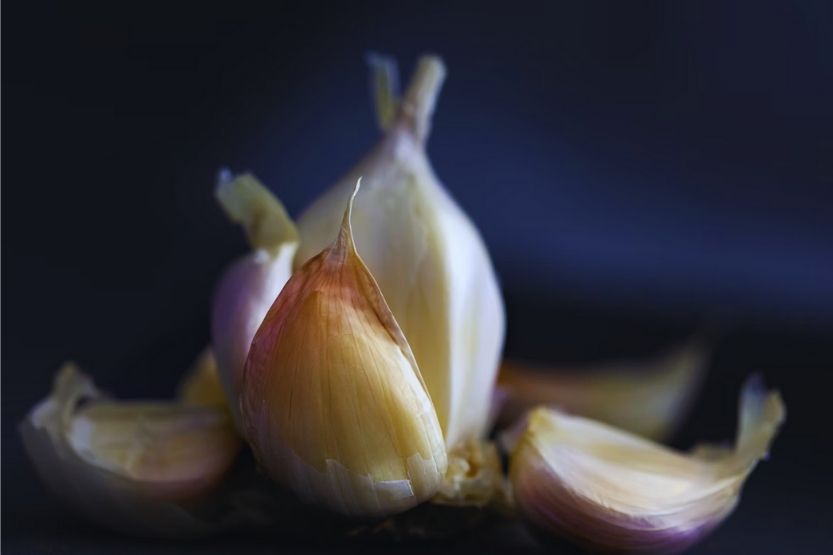
Usually, if there is already an infestation in your home, you are advised to call a pest control service to ensure that the problem is eliminated. However, there is nothing wrong with doing it yourself – if you know how to do it properly.
Here are some of the natural substances that you can use:
1. Diatomaceous Earth
Diatomaceous earth is a fossilized material that has sharp edges. When tiny gray bugs eat them, death will follow. But this material is not harmful to humans and their pets. You need to grind this material to a consistency that the bugs can consume. It will make these pests thirsty, and they will eventually die of dehydration.
2. Cinnamon
To humans, the scent of cinnamon is gentle and pleasant. But to tiny gray bugs, cinnamon is irritating. So, they won’t go near it. Place some cinnamon in places where you see their eggs, and they will go away.
3. Garlic Cloves
Garlic cloves contain Eugenol. This substance is commonly used to get rid of household pests and bugs because of its insecticide properties. You can put one clove in an infested area and let it do the work. The scent of the clove will repel these pesky insects.
4. Boric Acid
In the right amount, boric acid becomes poisonous to little creatures. Boric acid is a natural substance that you can buy almost anywhere. Just place the right amount in infested areas, and you will get rid of these pesky little pests. This substance will also destroy the eggs that they have laid.
5. Citrus Fruits
The smell of citrus fruits like lemon and orange will keep these tiny creatures at bay. Use the peelings of these fruits and leave them in infested areas. Replace these peelings with new ones after a couple of days until the pests flee by themselves.
6. Cucumber
Don’t throw away the cucumber peelings if there is a tiny gray bug infestation in your home. The scent of these peelings works the same way as the peelings of citrus fruits. After a couple of days, replace the peelings if the infestation persists.
7. Table Salt
Ordinary table salt, which is on your kitchen table, is very attractive to tiny gray bugs. They can’t resist eating it. Once they do, they will slowly die of dehydration.
How to Get Rid Of Gray Bugs
Here is a simple method of eliminating gray bugs from your home. You can use the substances that I have enumerated above. These steps can be used in conjunction with these natural substances, as well as with commercial insecticides:
- Remove all unwanted moisture from your home environment. This is the most effective step you can take in getting rid of these tiny gray bugs;
- Clean all suspected living and breeding spots of these tiny bugs;
- Seal all suspected water and moisture entry points. Use caulking material that will completely seal these spots;
- Remove all potential food sources;
- De-clutter suspected living and breeding spots of these tiny gray bugs; and
- Wet and roll up old newspapers. Place these rolls in suspected areas. These bugs will use them as their homes. After a few days, get these newspapers out and burn them.
How to Prevent Gray Bugs from Coming Back
After you’ve removed them, they can still re-invade your home given the right conditions. So, here are some ways you can prevent them from coming back:
- Don’t leave food litters around your home, especially in damp and dark spots;
- Store clothing in dry environments;
- Seal all your dried foods and place them in clean and organized cupboards;
- Remove dried leaves, wood, and dead plants from the perimeter of your house;
- Use a dehumidifier if you live in a moist climate;
- Get rid of household items that contain considerable amounts of adhesive. These items include cardboard boxes, laundry items, old stacks of paper and similar materials; and
- Dust your home regularly to prevent the presence of saccharides and starches that these small gray bugs love to eat.
Conclusion: Tiny Gray Bugs – What Are They and How to Get Rid of Them?
Many gray bugs can invade your home. The silverfish is one of the most common. They are called silverfish because of the way they move from side to side with their tapered tails. These bugs move fast so they can avoid predators.
These gray bugs are nocturnal insects that like to burrow in dark spots. You can get them out of your house by ensuring their cleanness. There are also a lot of natural substances and household cleaning items that you can use to get them out of your house.
Related reading:
Pine-Sol and Bleach [Can You Mix Them?]
Tiny White Bugs In Kitchen – What Are They and How to Get Rid of Them
Tiny Ants in the Kitchen: How to Get Rid of Them

![Tiny Bugs in Bed [Not Bed Bugs] - What Are They? Tiny Bugs in Bed](https://homecarezen.com/wp-content/uploads/2022/01/tiny-bugs-in-bed-150x150.jpg)
